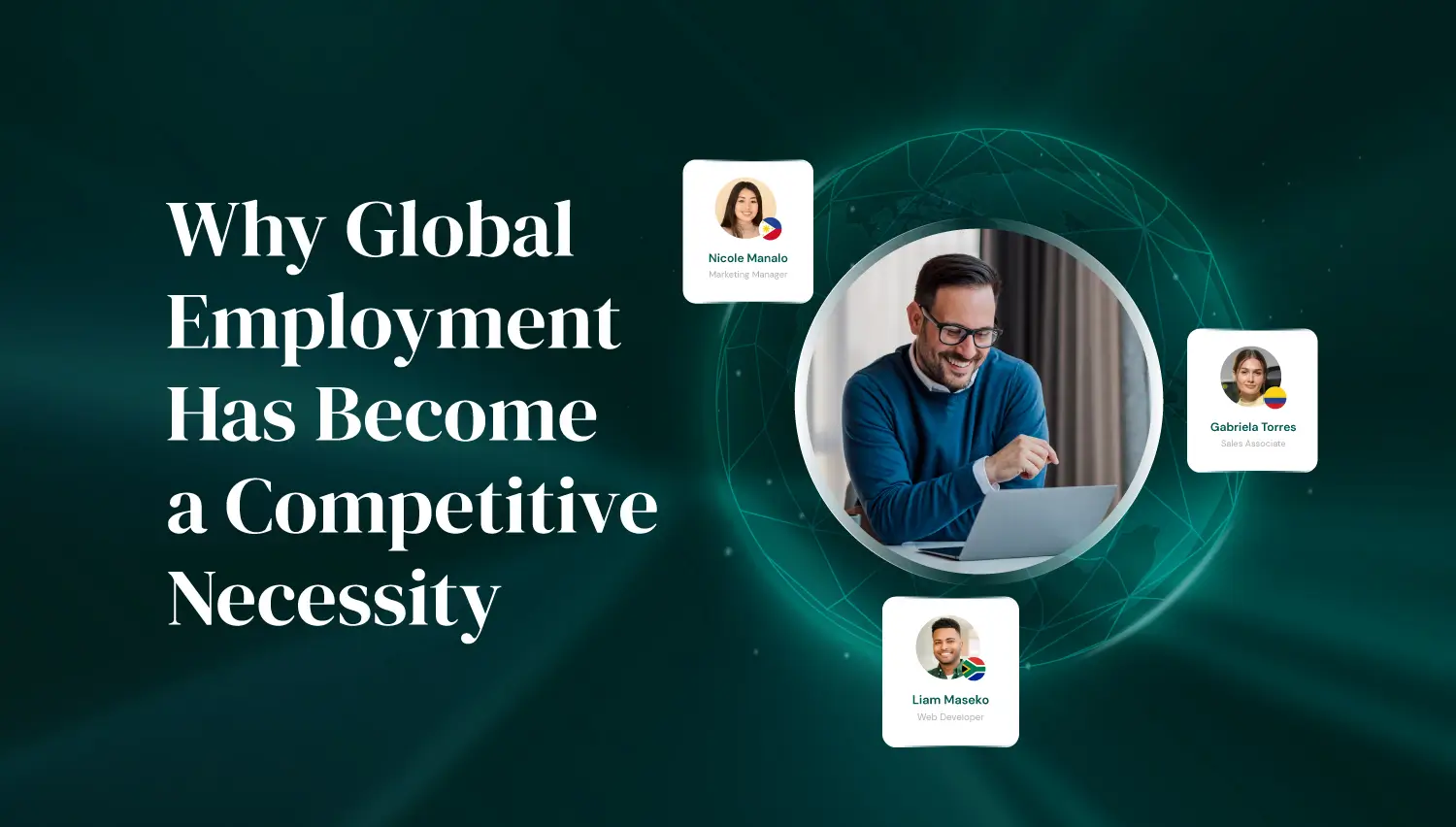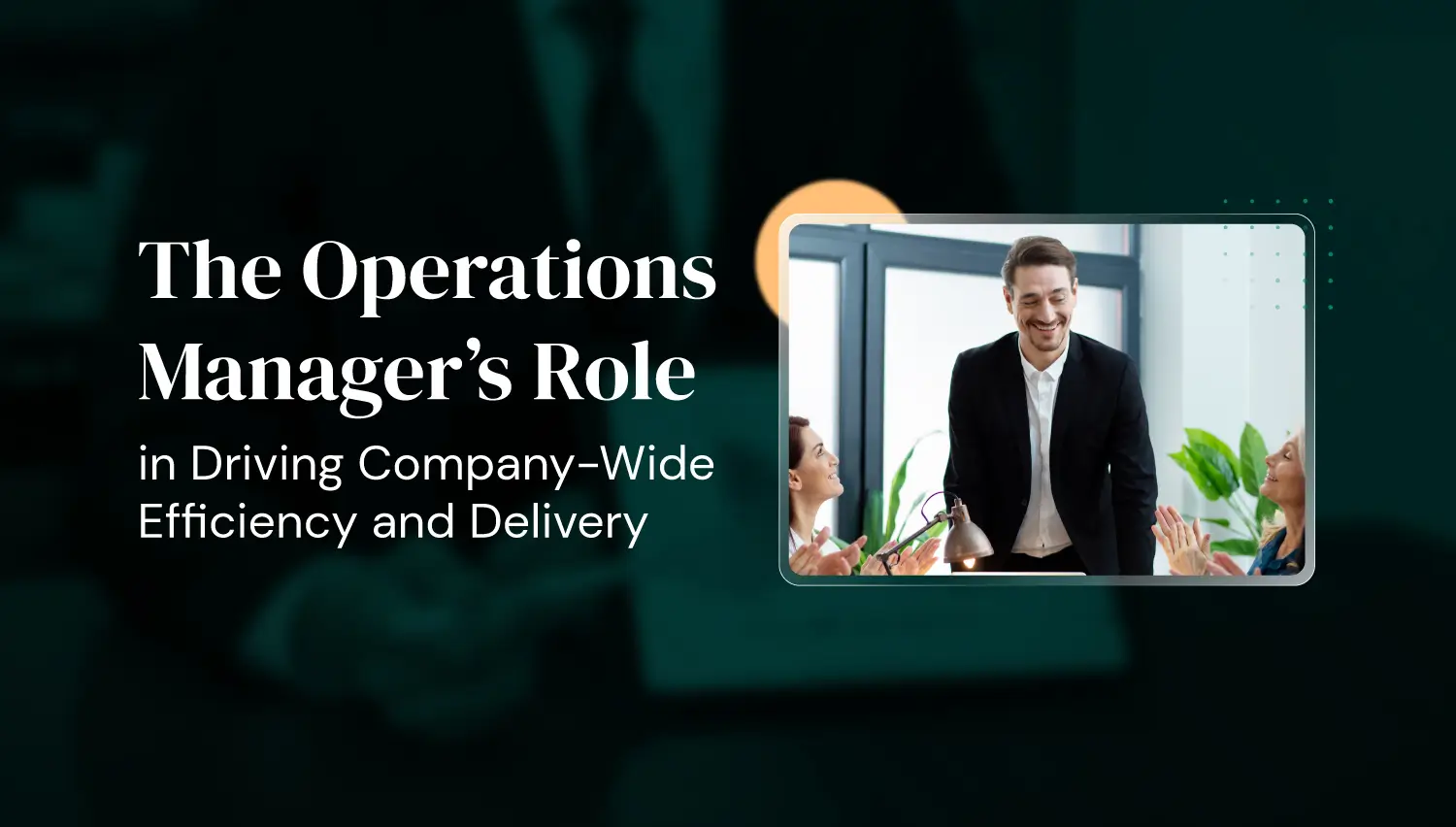A while back, I was advising a tech startup that planned to scale from about 30 to over 100 employees in under a year. They were growing fast, fueled by new funding, and the founders assumed that hiring would simply mean posting more jobs and interviewing whoever applied.
But cracks appeared quickly. Roles stayed open for months because the right candidates weren't in the pipeline. Interviewers gave wildly inconsistent feedback. Offers were declined because candidates didn't see a compelling reason to join. Morale inside the team suffered because the burden of missing talent fell on those already there.
I stepped in to help them build a real talent acquisition process. We started with workforce planning, mapping the roles they'd need not just next month, but six and twelve months out. We defined their employer brand, what they stood for, why great people should care, and how to communicate that consistently. We built sourcing strategies to engage passive candidates rather than waiting for inbound applicants. We trained interviewers, implemented structured assessments, and tracked time-to-fill and quality-of-hire metrics.
Within six months, their hiring speed nearly doubled, and offer acceptance rates shot up. More importantly, they felt in control of their growth, not perpetually chasing it. That experience confirmed for me that talent acquisition isn't just a set of HR tasks. It's a strategic lever for sustainable business success.
Defining Talent Acquisition
Talent acquisition is the holistic, end-to-end process of identifying, attracting, assessing, and onboarding skilled individuals to meet an organization's long-term objectives. Unlike reactive recruiting, it's proactive and strategically focused, not merely on today's vacancies, but on building relationships and capabilities that will serve the company's future. In essence, talent acquisition is how businesses design teams for sustainable success.
Although people often use the terms interchangeably, there's a key difference between talent acquisition and recruitment:
- Recruitment is typically reactive, triggered by an open role that needs filling quickly.
- Talent acquisition is proactive, centered around forecasting, planning, and nurturing potential talent even before positions become vacant.
A recruitment-only mindset may solve immediate needs. A talent acquisition mindset anticipates them, reducing chaos and preserving quality as companies scale.

The Importance of a Strategic Approach
In today's hiring landscape, competition for top talent is intense. Skilled professionals weigh multiple offers and scrutinize company reputations as part of their decision-making process. Organizations that treat talent acquisition as a strategic priority (rather than simply an HR function) see measurable benefits:
- Alignment with business goals: Hiring aligns with future growth and skill needs.
- Stronger employer branding: A compelling narrative attracts candidates who fit culturally and professionally.
- Higher quality-of-hire: Structured processes yield better matches and lower turnover.
- Reduced time-to-fill: Proactive pipelines mean faster hires when roles open.
I've repeatedly seen businesses unlock significant value by shifting from reactive recruiting to proactive talent acquisition. Rather than just filling roles, the goal is to build a workforce that propels your company forward.
The Six Core Steps of Talent Acquisition
One of the biggest misconceptions I encounter is that talent acquisition is simply a "hiring funnel" where you pour in resumes and eventually get an employee out the other end. In reality, successful talent acquisition operates as a series of interconnected steps, each one critical to attracting, assessing, and retaining high-quality talent. Here's how I've seen companies structure this process for sustainable hiring success.
1. Workforce Planning
Effective talent acquisition starts with knowing where your organization is headed. Workforce planning means examining current skills, identifying future gaps, and forecasting how business growth or transformation will affect talent needs.
For example, I once worked with a SaaS company preparing to launch into new markets. By modeling revenue projections against required headcount, we discovered a looming shortfall of multilingual customer support talent, so we could solve this problem before it became urgent.
Workforce planning isn't an HR-only exercise; it's a strategic dialogue between leadership, finance, and operations. Your hiring plans need to sync with broader objectives like product launches, geographic expansion, or digital transformation. When talent planning happens in isolation, companies end up scrambling to fill roles, often at a higher cost and lower quality.
2. Employer Branding
I often tell clients: your employer brand exists whether you manage it or not. Employer branding is about defining why someone should want to work for you, beyond salary and perks. It's your story, your mission, your culture. A strong employer value proposition (EVP) helps you attract candidates who resonate with your purpose and stick around long-term.
Today's talent researches employers the same way consumers research products. Social media, employee testimonials, and review sites like Glassdoor all shape perception. Companies that proactively share authentic stories about their people, culture, and values tend to stand out. I've seen startups punch well above their weight in the talent market simply by showcasing their team's achievements and the real impact employees make.
3. Sourcing Candidates
Posting a job ad and waiting is rarely enough. Successful talent sourcing blends multiple channels, job boards, professional networks, internal referrals, and curated talent pools.I once helped a client build a "silver medalist" pipeline – candidates who'd interviewed previously but weren't the right fit at the time. When a similar role opened later, they filled it in days instead of months.
Top talent is often employed and not actively looking. Reaching these passive candidates requires personalized outreach and nurturing relationships over time. I've found that sharing meaningful updates, like company milestones or industry insights, keeps your brand warm until the candidate is ready to consider a move.
4. Screening and Selection
Bias creeps in when interviews are unstructured or rely on "gut feel." Structured interviews with standardized interview questions tied to job competencies help ensure consistency and fairness. Supplementing interviews with skills assessments, job simulations, or work samples provides objective data for better hiring decisions.
Companies increasingly prioritize equitable hiring practices. That means training interviewers to recognize bias, ensuring diverse interview panels, and using tools that anonymize early candidate data where appropriate. Fairness isn't just a legal risk; it's a brand risk, and candidates pay attention.
5. Interviewing
Behavioral interviews ("Tell me about a time when…") reveal how candidates handle real situations. Situational interviews ("What would you do if…") test problem-solving and critical thinking. I've seen companies significantly improve hiring outcomes simply by aligning interview questions to the key competencies needed for the role.
Great hiring decisions rarely happen in isolation. Involving colleagues from other teams brings fresh perspectives and helps assess cultural and functional fit. It also builds buy-in so that, when someone joins, the team is ready to support them.
6. Onboarding
Your talent acquisition process doesn't end with an accepted offer. Onboarding shapes a new hire's perception of the company and affects retention from day one. A smooth, well-structured onboarding process makes new employees feel welcomed, informed, and productive faster.
I've seen onboarding programs that left new hires unsure of what success looked like. The best programs clearly define role expectations, key goals for the first 30/60/90 days, and introduce new hires to stakeholders across the business. It's the difference between an employee who simply joins the team and one who's fully engaged from the start.
Best Practices in Talent Acquisition
I've worked with companies where hiring was treated purely as a transactional task, just paperwork and interviews to keep seats filled. And I've seen the other end of the spectrum: organizations that run talent acquisition as a mission-critical, continuously improving discipline. The gap between those approaches shows up in the same places every time: how they use data, how they treat candidates, how committed they are to diversity, and whether they grow talent from within. Here's how top-performing teams excel in each area.
Implementing Data-Driven Recruitment Strategies
If there's one truth I've learned, it's that you can't improve what you don't measure. Yet plenty of hiring teams still operate on gut instinct alone. Leading organizations lean on data to make sharper decisions:
- Time-to-fill and time-to-hire: Measuring how long roles stay open reveals bottlenecks in the process.
- Quality-of-hire metrics: Assessing how new hires perform, stay, and integrate ensures you're hiring for long-term success, not just speed.
- Source effectiveness: Data highlights which channels (job boards, referrals, social media) deliver the highest ROI.
I once helped a client discover, through data, that referral hires stayed 40% longer than hires from job boards. They doubled their referral program investment and saw a meaningful drop in turnover.
Enhancing Candidate Experience Throughout the Process
Candidate experience has become a genuine competitive advantage. It's not just about being polite; it's about brand perception and talent pipeline health. Candidates who feel informed and respected, even when rejected, are far more likely to speak positively about your company.
Key best practices include:
- Timely communication: Silence breeds frustration and damages reputation.
- Transparency: Candidates appreciate knowing timelines, process steps, and expectations.
- Respect for time: Avoid unnecessary interview rounds or repetitive assessments.
Fostering Diversity, Equity, and Inclusion
Diversity, equity, and inclusion (DEI) aren't just ethical imperatives; they're strategic advantages. Diverse teams innovate more, solve problems better, and deliver stronger financial results. But building diverse teams starts long before sending out an offer letter:
- Inclusive job descriptions: Avoid gendered or biased language that narrows your pool.
- Bias training: Equip interviewers to spot and reduce unconscious bias.
- Diverse sourcing: Actively connect with communities and networks that broaden your reach.
Promoting Internal Mobility and Career Development
One of the most overlooked hiring strategies is simply looking inward. Often, your next great hire already works for you. Promoting internal mobility is a win-win: it's faster, more cost-effective, and reinforces company loyalty.
Best practices include:
- Career pathing: Clear growth paths keep employees motivated and reduce turnover.
- Internal job postings: Posting roles internally first protects institutional knowledge and rewards loyalty.
- Upskilling and training: Developing current employees can be cheaper and more effective than hiring new talent externally.
Leveraging Technology in Talent Acquisition
One of the quickest ways to spot a broken hiring process is to look at how a company manages information. I've seen organizations try to run recruiting entirely out of email threads and spreadsheets, only to lose track of candidates, misplace interview notes, and scramble for data when leadership asks for reports. Technology isn't just a convenience in talent acquisition. It's the difference between chaos and a well-run, strategic operation.
Utilizing Applicant Tracking Systems (ATS)
An Applicant Tracking System (ATS) is often the backbone of modern hiring. More than a database, a well-chosen ATS delivers real advantages:
- Visibility and organization: Everyone involved in hiring sees real-time updates, reducing confusion and duplicated work.
- Collaboration: Interviewers can leave structured feedback, compare candidates, and move seamlessly through decision stages.
- Reporting and analytics: An ATS makes it easy to measure critical metrics like time-to-fill, pipeline health, and source effectiveness.
Incorporating AI and Machine Learning for Candidate Matching
AI and machine learning are quietly reshaping talent acquisition. Beyond the buzzwords, there are practical applications making a real difference:
- Resume screening: AI tools parse resumes quickly, spotlighting skills and experiences that match job requirements.
- Predictive analytics: Some platforms analyze historical data to predict which candidates are most likely to succeed in a role.
- Bias reduction: Newer tools anonymize parts of candidate profiles to help reduce unconscious bias during early screening.
Automating Communication and Scheduling
Candidate communication eats up an enormous amount of recruiter bandwidth. Smart teams deploy automation to stay responsive without sacrificing personalization:
- Chatbots: These can handle FAQs, share application updates, or collect initial candidate info around the clock.
- Automated scheduling: Calendar-syncing tools eliminate endless email ping-pong over interview times.
- Personalized email sequences: Automated follow-ups keep candidates engaged and informed throughout the process.

Measuring Success in Talent Acquisition
A talent acquisition process is only as good as your ability to measure its outcomes. Yet I've worked with plenty of organizations that hire aggressively but can't answer basic questions: How long does it take us to fill a role? Are our new hires performing well? Which channels bring the best talent? Without real visibility, hiring becomes guesswork, and guesswork is expensive.
Here's how the best talent teams measure success and continuously improve.
Key Performance Indicators (KPIs) to Track
High-performing talent acquisition teams track a core set of metrics that go beyond counting hires. These KPIs shine a light on both process efficiency and hiring quality:
- Time-to-fill: Measures how many days it takes to fill a role from job posting to accepted offer.
- Time-to-hire: Focuses on the candidate's journey, how quickly you move from first touch to hire.
- Cost-per-hire: Tracks all expenses associated with bringing someone on board, from job ads to recruiter time.
- Source of hire: Identifies which channels (e.g., job boards, referrals, social media) deliver quality candidates.
You can save significantly simply by analyzing source-of-hire data and redirecting spending to the channels that truly work.
Analyzing Time-to-Fill and Quality-of-Hire Metrics
Two of the most critical (and often misunderstood) metrics in talent acquisition are time-to-fill and quality-of-hire. Speed matters, but only if it results in strong, lasting hires.
- Time-to-fill: Prolonged vacancies increase workload on current staff, lower morale, and can impact revenue. Tracking this metric helps pinpoint bottlenecks. Whether it's slow resume reviews, lengthy interview processes, or delayed approvals.
- Quality-of-hire: Measures the value a new hire brings to the organization. Metrics might include first-year retention, performance scores, or manager satisfaction. Quality-of-hire connects hiring outcomes directly to business success.
Continuous Improvement Through Feedback and Analytics
Talent acquisition shouldn't operate in a vacuum. The best teams seek feedback from both candidates and hiring managers to identify friction points and improve future processes:
- Candidate experience surveys: Anonymous surveys uncover how candidates perceive your hiring process, whether they accept the job or not.
- Hiring manager feedback: Regular check-ins with managers reveal whether new hires are meeting expectations and whether the process supported the team's needs.
- Process audits: Periodic reviews of your entire hiring funnel help catch inefficiencies, compliance gaps, or outdated practices.
I've helped teams implement quarterly hiring process reviews where data and anecdotal feedback come together. In one case, this revealed that candidates were frustrated with duplicate assessments, leading the team to simplify their process and ultimately improve their acceptance rates.
Transform Your Talent Acquisition Process with Expert Support
Building a strategic, data-driven talent acquisition process isn't easy, especially when your team is already stretched thin handling daily operations and urgent hiring needs. From workforce planning to employer branding, sourcing, technology integration, and measuring success, there are countless moving parts that demand attention and expertise.
If If you're looking to elevate your talent acquisition approach or simply want a trusted talent acquisition partner to help you scale smarter, I highly recommend reaching out to our team at Somewhere. We specialize in helping companies design and execute end-to-end talent acquisition strategies that align with business goals, strengthen employer brand, and deliver measurable results.
Whether you're planning rapid growth, expanding into new regions, or just trying to reduce hiring chaos, Somewhere's expertise can help turn talent acquisition into a genuine competitive advantage.
Fill out the contact form below to learn how Somewhere can help you build a talent acquisition process that attracts the right people and sets your organization up for long-term success.









.jpeg)

.webp)


